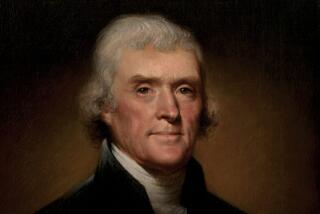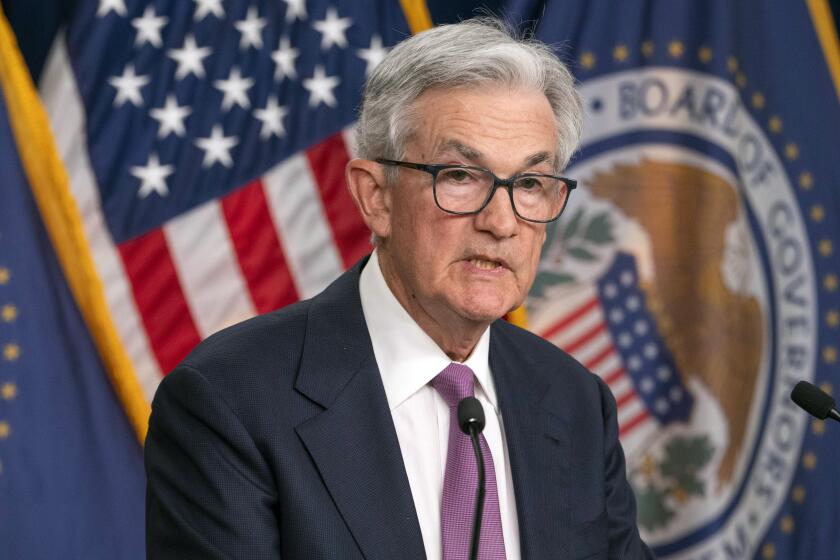SDI Firms Swell Election Coffers : ‘Star Wars’ PACs Give $6 Million to Lawmakers
Industrial suppliers for President Reagan’s Strategic Defense Initiative, the ambitious plan to create a barrier in space against enemy missiles, have already provided $6 million in campaign funds for congressional supporters of the fledgling plan, popularly known as “Star Wars.”
The amount was calculated from Federal Election Commission data analyzed by the Council on Economic Priorities, a nonprofit research organization based in New York that describes itself as a “public service watchdog” and frequently criticizes Pentagon spending.
The council’s report said 19 political action committees set up by defense contractors have provided campaign money for key legislators who support SDI. The “Star Wars” project has cost taxpayers $5 billion since its inception three years ago and could cost a total of $38 billion if carried out on a full-scale basis by 1990.
The top contributor to the committees, the report said, was Lockheed Corp., with PAC donations totaling $586,941 in the three years ending last March. Second and third were Rockwell International, with $457,625, and General Dynamics, with $452,264. The smallest donor was Aerojet General, which gave $64,160 over the last three years.
The committees’ contributions have been precisely targeted to benefit those lawmakers most closely associated with ensuring the project’s future. For example, in the Senate, Bob Packwood (R-Ore.), chairman of the Finance Committee, got top dollar, with $46,000 from pro-SDI PACs in the 15 months from Jan. 1, 1985, through March of this year.
Sen. Dan Quayle (R-Ind.), chairman of the Armed Services subcommittee on defense acquisitions, was second, with $43,700, and California’s Republican Sen. Pete Wilson, chairman of another Armed Services subcommittee, got $29,700.
Two Senate Democrats
Because Democrats are the Senate’s minority party, only two of them, Ernest F. Hollings of South Carolina, a senior member of the Appropriations subcommittee on defense, and John Glenn of Ohio, a member of the Armed Services defense acquisitions subcommittee, were among the top dozen recipients, with $24,200 and $22,000, respectively--the two smallest amounts in the top 12.
In the Democratic-controlled House, only three Republicans were among the top 12, but Rep. William L. Dickinson (R-Ala.) came first, with $32,750. As the senior Republican on the Armed Services subcommittee on research and development, he has been the Administration’s point man for SDI in the House.
One of the two other Republicans and the only Californian among the top dozen receiving money was Rep. Duncan L. Hunter of Coronado, whose membership on the Armed Services subcommittee on procurement was worth $13,080. Rep. Robert H. Michel (R-Ill.), who holds no defense committee post but as House Republican leader must fight for Administration priorities, got $27,000.
House Democrats
The late Joseph P. Addabbo of New York, who until his death in April chaired the Appropriations subcommittee on defense, was the top Democratic recipient in the House, with $31,650. Rep. Les Aspin (D-Wis.), who is chairman of the Armed Services Committee and has eagerly backed “Star Wars,” got $25,600, and Rep. John P. Murtha (D-Pa.), a member of the Appropriations subcommittee on defense, received $19,500. No California Democrats were among the top 12 in the House.
The authors of the report, Rosy Nimroody and Scott London, said House recipients of “Starpac” funds voted for increased funding 77% of the time. In the most significant House vote on “Star Wars” to date--a June, 1985, ballot on an amendment to cut the project’s budget from $2.5 billion to $2.1 billion and restrict funding of SDI projects that might violate the anti-ballistic missile treaty with the Soviet Union--beneficiaries of PAC money stood by a margin of 2 to 1 against the cuts and restrictions.
Support From Recipients
Senators who have received money from the pro-SDI PACs have been even more loyal to the program, with an 86% support record in three votes against budget cuts in 1984 and 1985.
In their report, Nimroody and London wrote that spending by the PACs may “allow the SDI to develop an economic momentum that may be hard to reverse, regardless of the program’s technical and strategic merits.”
Political action committees have mushroomed from a few hundred in the mid-’70s to more than 4,000, with commensurate increases in the amounts of money they handle. Corporations, once barred by law from giving to presidential campaigns, can organize PACs for any political purpose.
More to Read
Inside the business of entertainment
The Wide Shot brings you news, analysis and insights on everything from streaming wars to production — and what it all means for the future.
You may occasionally receive promotional content from the Los Angeles Times.






